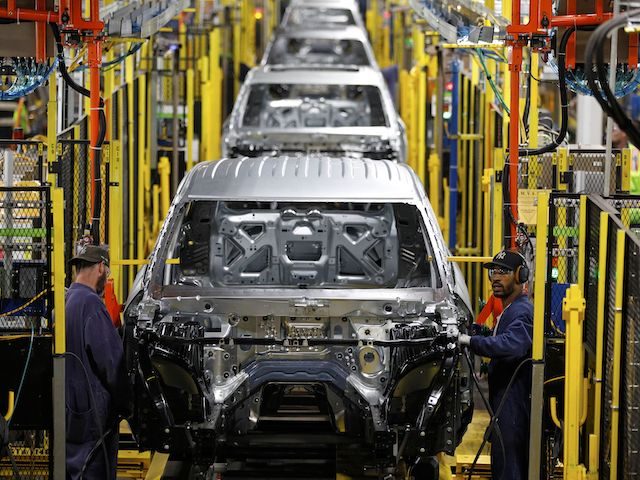New orders for products of U.S. manufacturers either expanded in August or contracted for the third straight month—depending on which survey you believe.
The Institute for Supply Management’s U.S. Purchasing Manufacturings Index (PMI), the more widely followed survey, showed new orders rising in August. The S&P Global PMI, however, showed new orders falling for the third straight month.
While differing on some details, both surveys paint a picture of a manufacturing sector that is limping through the second half of 2022. Activity is barely above the pandemic lows of the summer of 2020, the surveys show.
The ISM headline index of manufacturing activity held steady for August at 52.8, the lowest reading since June of 2020. ISM said that this signals ongoing expansion in the sector and the U.S. economy. The S&P Global PMI for U.S. manfuacturing posted 51.5 in August, slightly above the earlier released ‘flash’ estimate of 51.3, but down from 52.2 in July. This headline index reading was the lowest since July 2020, with latest data indicating subdued overall health conditions across the US manufacturing sector.
Despite this sluggishness, both indexes were a bit stronger than expected. Economists had forecast the S&P Global index would hold show a month-to-month decline to 51.3 and the ISM would fall from the July read of 52.8 to 52.0.
The surveys also diverged on employment. The ISM survey indicated that employment at manufacturers stopped contracting in August and began to grow. The S&P Global survey saw employment grow but at the second-slowest pace in 0ver two years.
Naturally, the commentary from each survey’s lead economist took very different tones.
“US factory production was down for a second month running in August, with demand for goods having now fallen for three straight months amid the ongoing impact of soaring inflation, supply constraints, rising interest rates and growing economic uncertainty about the economic outlook,” said S&P’s Chris Williamson. “Barring the initial pandemic lockdowns months, this is the steepest downturn in US manufacturing seen since the global financial crisis in 2009
“The U.S. manufacturing sector continues expanding at rates similar to the prior two months. New order rates returned to expansion levels, supplier deliveries remain at appropriate tension levels and prices softened again, reflecting movement toward supply/demand balance,” said ISM’s Timothy Fiore. “According to Business Survey Committee respondents’ comments, companies continued to hire at strong rates in August, with few indications of layoffs, hiring freezes or head-count reductions through attrition.”
Both surveys indicated easing of inflationary pressures. The ISM index of prices registered 52.5 percent, down 7.5 percentage points compared to the July figure of 60 percent; this is the index’s lowest reading since June 2020. S&P said that input prices increased at the slowest pace since the start of 2021 and that sell prices rose at the weakest rate for a year-and-a-half as manufacturers passed on some of the moderation in cost burdens to their customers in an effort to drive sales.
The S&P survey indicated that production contracted for a second straight month amid weak client demand, which Williamson said was linked to the impact of inflation and economic uncertainty on customer spending. The ISM survey showed production growth slowing but not contracting.
“Worryingly, the sharpest drop in demand was recorded for business equipment and machinery, which points to falling investment spending and heightened risk aversion. Similarly, payroll growth slowed close to stalling, reflecting a growing reticence to expand workforce numbers in the face of a deteriorating demand environment,” Williamson said. “Falling demand for raw materials has, however, taken pressure off supply chains and helped shift some of the pricing power away from sellers towards buyers. Likewise, we are seeing more manufacturers reduce their selling prices to drive sales. Although still elevated by historical standards, the survey’s inflation gauges are now at their lowest for one and a half years, which should help to bring consumer price inflation down in the coming months.”
The two surveys are drawn from slightly different groups. The ISM survey is weighted more toward larger manufacturers with exports a bigger part of their sales mix. The S&P Global survey has more smaller manufacturers and likely responds more to domestic demand.

COMMENTS
Please let us know if you're having issues with commenting.